A couple months ago, a pair of pigeons landed on a tree I'd laid out on the balcony. They were acting a little strange, so I went outside to shoo them away. As they reluctantly flew away, I discovered they'd been sitting on two fresh new eggs. And that was the start of my two month long stint as a pigeon dad.
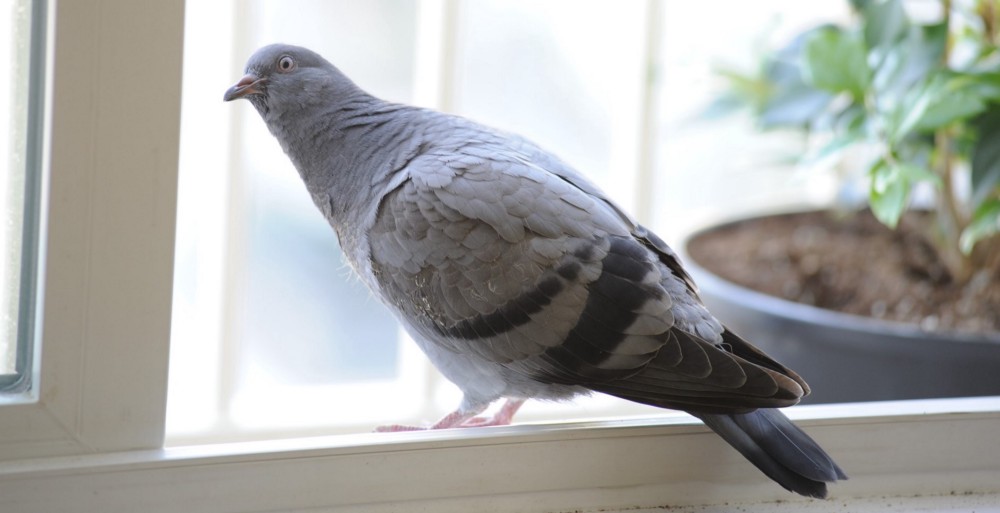
Being a pigeon parent is a mixed blessing. They don't make for great pets - at least, not without a whole lot of training. But there's something really cool about seeing how animals raise children in the wild. So cool, in fact, that I decided to start documenting it.
Day 1
The pigeons start making preparations, shoving the tree's soil around and gathering twigs. We name the father Baba and the mother Bubu.
Day 2
Pigeons are actually quite remarkable parents. The father and mother rotate over evenly spaced shifts, roughly 6 hours each. Parents never leave the eggs exposed; the two birds will form a sort of mini locomotive and shuffle over the eggs. Over the course of the two weeks of incubating, I only saw the eggs a handful of times. The first few weeks are pretty boring, so let's skip to the interesting bit…
Day 11
The babies are born! Life changes remarkably for the parents from this point onwards. Baby pigeons have bottomless stomachs, and these parents have two mouths to feed. While the children are young, the parents continue the same approach of sitting on top of them. They'll soon become big enough that the parent's can no longer cover them.
Day 12
Pigeons feed their children by regurgitating food into their childrens' mouths. It doesn't look like a whole lot of fun - there's only space for one beak in the parents mouths, so both babies are constantly fighting each other for the priviledge. It's not an issue at first, but when the kids get older the parents will start to snap back.
Now that the children are born, there's slightly less urgency to the shift changes.
Day 13
It's now been nearly three weeks since the tree's had any water, but I don't want to flood the soil and freak out the kids. I decide to try melting ice. It's kinda effective.
Day 14
Concerned with how quickly the babies are growing - and how the parents cant seem to keep up with the demand - I put out some crackers. This only lasts for a couple of days before I realize that the parents know what they're doing and don't need my help.
Day 16
The babies are finally big enough that the parents can't feed them enough through shifts. That, or they're getting sick of the whole parenting thing. They start leaving the babies alone for small periods of time.
Day 17
The babies are growing bigger day-by-day. The yellow fuzz that completely covered them at the start is starting to make way for spines. These will eventually turn into full-blown feathers.
Day 18
The babies are so big they can no longer be completely covered by the parents. The spines start to get puffs of feathers on them. The parents are starting to leave the kids alone for longer and longer periods of time. Every time a seagull swoops by the window, I hold my breath and hope it doesn't spot the babies.
Day 20
Disaster! A seagull spots the babies and goes in for the attack. I manage to shoo it away in the nick of time, but it keeps coming back for more. I put together a cardboard sanctuary - just big enough for the parents to squeeze through, but small enough that seagulls don't have space.
The parents don't know what to do about this new setup at first, but they figure it out soon enough.
Day 21
The pigeons are really starting to develop a coat now. They're also big enough that their poop really starts to pile up.
Day 25
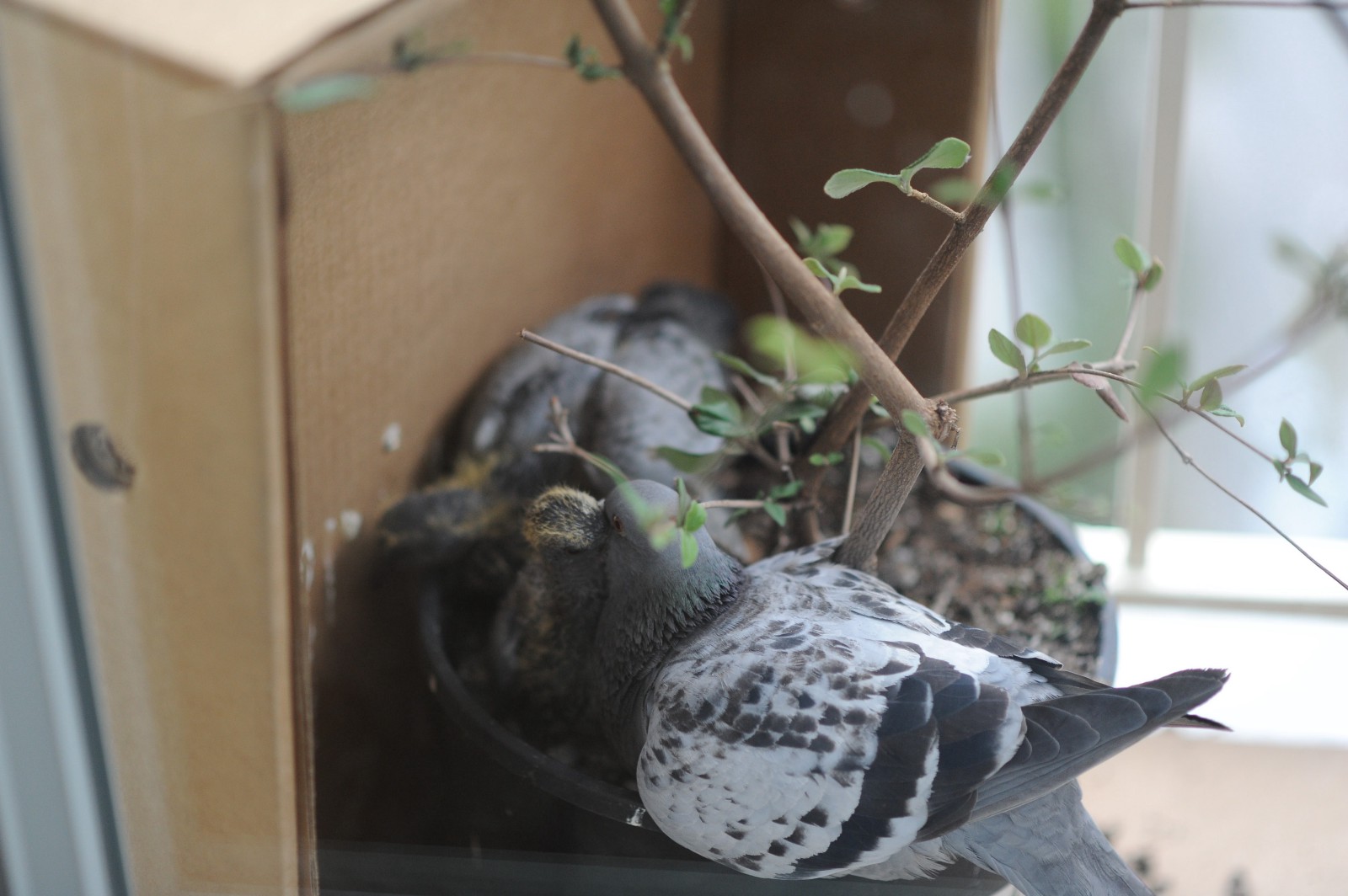
The babies really go for it during feeding. As cool as it must be to raise kids, the feeding part doesn't seem fun.
Day 26
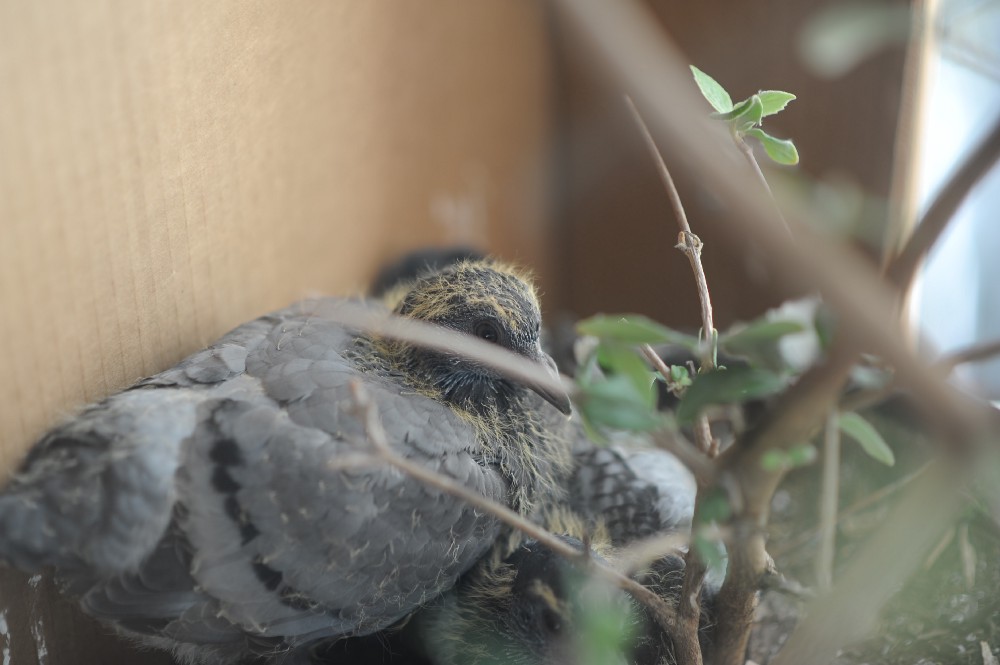
The babies are starting to look like actual pigeons now. It wont be too long before they start stretching their wings.
Day 28
Bebe and Dreamliner are now stretching their wings and moving around a ton. They're also starting to develop personalities.
The bigger one is Dreamliner. He's always been the more dominant of the two, and his extra work at clawing food out of mom and dad is really starting to show.
Day 31
The balcony is starting to look a lot like a recycling bin. I'm constantly adding new layers of cardboard in an effort to prevent the floor from looking like a Jackson Pollock painting.
The pigeons may be going to town on the balcony, but they're starting to look awfully mature. The yellow strands of hair that have been with them from the very beginning are nearly completely covered by feathers.
Day 32
The last full day of filming. The pigeons still have a ways to go, but they're starting to get too big for the bulky timelapse setup to work properly. They're also - understandably - quite afraid of the strange man that keeps fiddling around near them every day.
Day 35
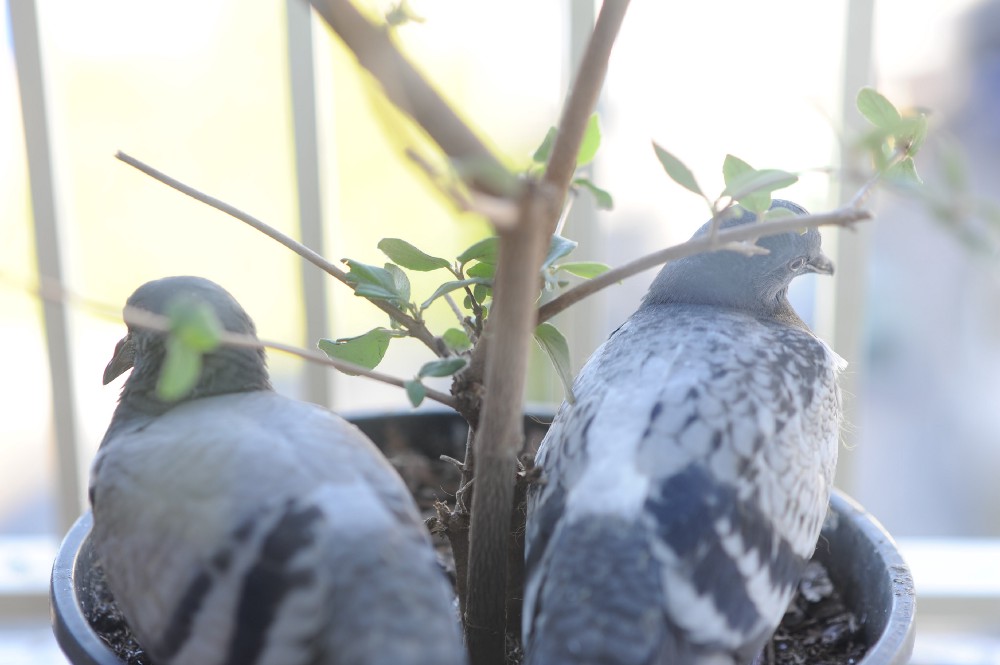
The babies are nearly adult size by now. The parents have long given up the idea of sitting in the same tree. They tuck up a few feet away, out of sight of the babies so they can get some peace and quiet.
Day 41
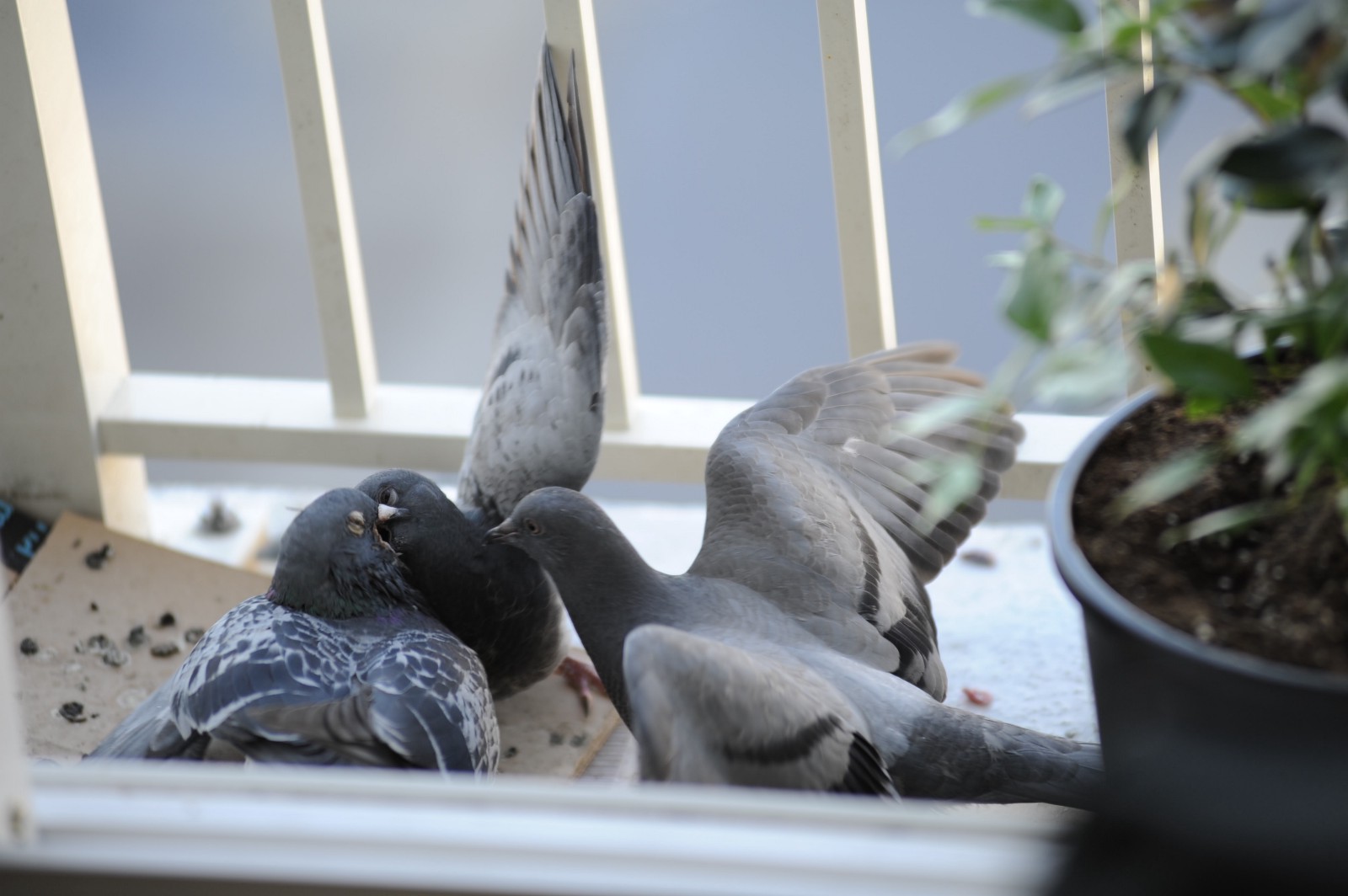
The bi-hourly feeding cycle. Pigeon dentists must be awfully busy.
Day 42
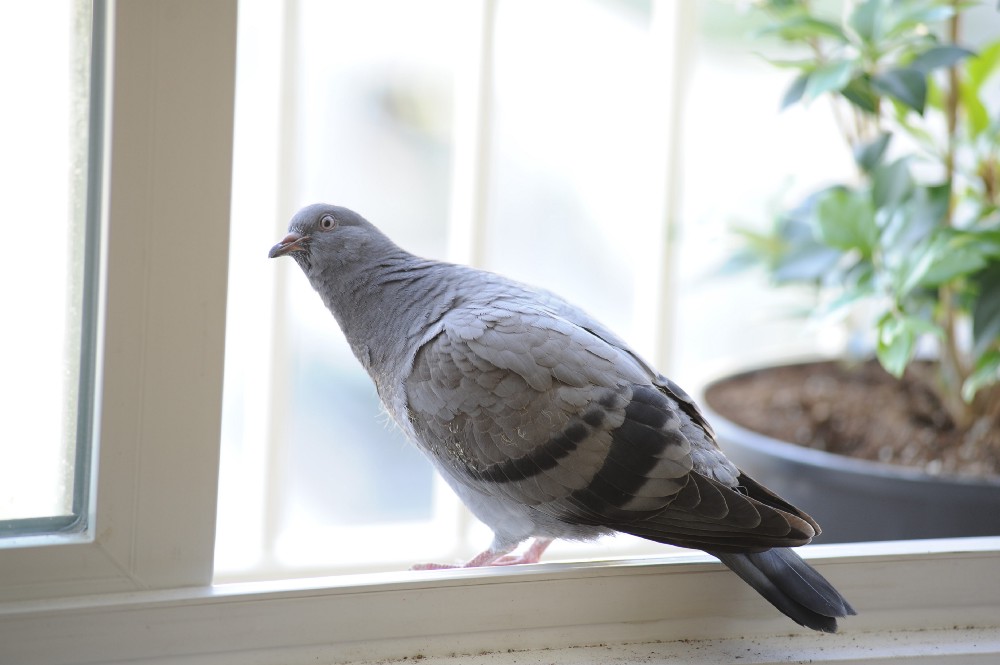
Bebe cautiously checking his boundaries. As the pigeons grew bigger, they seemed to grow less afraid of my presence.
Day 44
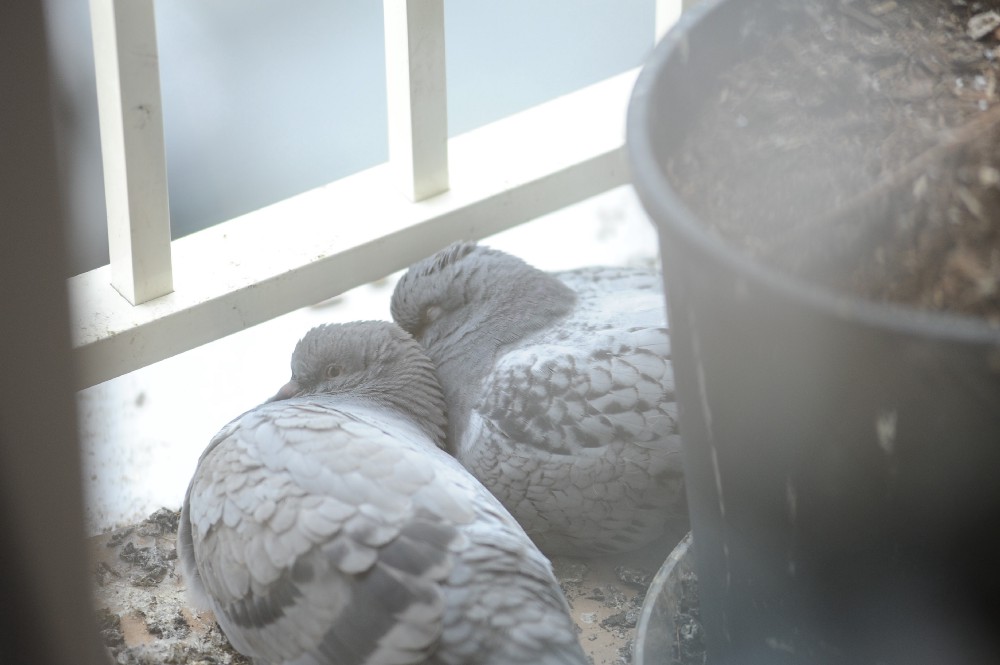
The day before the first flight. Dreamliner (the one on the right) comes back once to tell us he's all right, but then he's off to live his own life. Bebe (on the left) and the parents still come back every once in a while, but the family seems to have found some other place to live their life. And that's all right with me.
All in all, it was a pretty remarkable experience. Pigeons are actually fascinating animals, and watching the devotion to their kids made me appreciate what my parents did for me. They didn't even have to throw up in my mouth.
